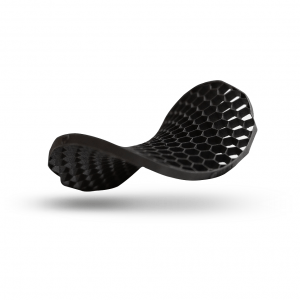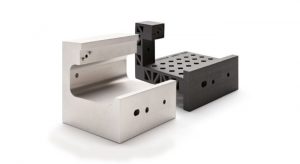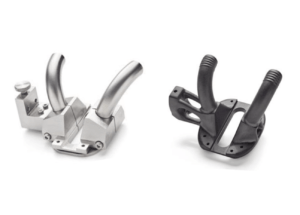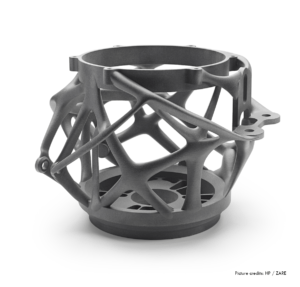Reduce 3D printing costs
Tips for economical 3D printing components
In our online 3D printing calculator you can calculate the costs of your components in real time and order them directly. The prices for a wide variety of material and technology combinations can be compared with one another in order to ultimately select the right price-performance option. For a cost-optimized 3D printing, we also recommend optimizing the desired component. In the following, we will show you how you can take over this optimization yourself using simple methods.
We receive numerous components every day that are clearly designed for conventional manufacturing techniques, such as CNC machining. In conventional "subtractive" processes, parts are usually designed in such a way that as little material as possible has to be removed from an existing basic block in order to achieve the desired geometry. In 3D printing, however, the manufacturing process has to be approached the other way around. The following applies here: the less material, the cheaper the components!
Methods for cheaper 3D printing components
The costs of 3D printed parts are primarily dependent on the part volume and the so-called "bounding box". It is therefore important to reduce these two sizes using sensible methods. In the following we show some procedures that can usually be implemented very quickly and are often associated with cost reductions. Please note that the use of individual methods can also change the mechanical properties of the components.
Do you want to find out more about how 3D printed components are calculated and what exactly is included in the calculation? You can find out more here!

Reduce wall thickness
Reducing the wall thickness can produce huge savings. In the case of housing components, it is possible to save up to 30% of material costs by reducing wall thicknesses from 3 to 2 mm. Of course, for reasons of stability, it does not always make sense to simply reduce the wall thickness across the entire component. You still have the option of reducing areas that are not mechanically stressed to a minimum. We consider a wall thickness of approx. 1.0 mm to be the lowest value. On wall thicknesses below this value, no guarantee can be given with regard to display and function. Walls that are too thin are not only technologically difficult to represent, but also tend to yield strongly, making the part appear fragile.

Dissolve voluminous areas
Mostly these are components that were originally designed for conventional manufacturing techniques, where you can save a lot of costs in 3D printing by dissolving voluminous areas. The approach is very simple. Either you try to completely remove the massive areas or you work with a stiffening structure to maintain the initial stability. However, one thing must be taken into account here, especially for components that are to be manufactured using selective laser sintering or the HP Multi Jet Fusion process: The stiffening structure must be designed in such a way that excess material within the hollowed-out areas can be easily removed.

Put components together
A great advantage of 3D printing is that, among other things, overhangs and channels can be introduced into components that would not be possible with conventional manufacturing methods. Since complex components or geometries cannot be implemented or can only be implemented with great difficulty using classic manufacturing techniques, they are often produced in several parts and then reassembled as an assembly. For many use cases, 3D printing allows the entirety of all individual components to be printed as one part at the same time, which has significant savings potential in terms of part volume, bounding box and manual rework. At the same time, this causes entire assembly processes to fail in places, which further reduces overall costs.

Topology optimization / generative design
With topology optimization, an optimal component geometry is generated computer-aided using intelligent algorithms and specifying various framework conditions, such as the forces acting on the component. This usually requires special and cost-intensive software that can process and apply these algorithms. The generated geometry can be optimized for various applications, such as extreme lightweight construction or optimal stiffness-to-mass ratio. This creates very special structures, mostly based on nature, which normally only function optimally for a defined load case. This approach is probably the most advanced to reduce component costs with regard to the material used and usually requires additional software.